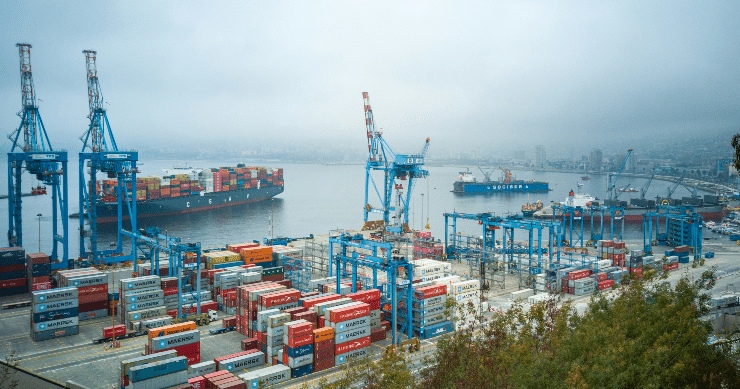What is a Vendor Framework?
In today’s turbo-charged business world, we’re all about connections, which means relying on third-party vendors and a complex supply chain to keep the wheels turning. But here’s the clinch: with great partnerships come significant risks. And guess what? Old-school due diligence methods just aren’t cutting it anymore.
Let’s put it his way. Your average small business has double or triple-digit vendors and third-party relationships. How do you keep track? How do you stay ahead of the curve?
That’s why businesses are turning to Vendor Risk Management (VRM) frameworks, comprehensive structures designed to address this challenge to identify, assess, and manage risks associated with third-party relationships
What exactly is a framework?
It’s your playbook, your master plan – a comprehensive set of policies, procedures, and tools tailored to your organization’s unique needs. It’s the backbone of your vendor risk management strategy, guiding you every step of the way to ensure nothing slips through the cracks.
In this article, we’ll explore the importance of VRM frameworks, essential factors to consider when choosing a framework, and the different approaches organizations can take to manage vendor risk effectively.

Understanding Vendor Frameworks
A vendor management framework comprises policies, procedures, and tools to identify, assess, and manage risks associated with third-party relationships. By implementing a robust IT vendor management framework, organizations can ensure that they work with trusted partners capable of meeting their needs and complying with policies and standards.
NIST Vendor Management Framework
One prominent example of a vendor management framework is the NIST (National Institute of Standards and Technology) framework. The NIST framework provides guidelines and best practices for managing vendor risk effectively, drawing on industry standards and regulatory requirements. It offers a structured approach to identifying, assessing, and managing risks associated with third-party relationships, helping organizations enhance their cybersecurity posture and protect sensitive data.
Start Getting Value With
Centraleyes for Free
See for yourself how the Centraleyes platform exceeds anything an old GRC
system does and eliminates the need for manual processes and spreadsheets
to give you immediate value and run a full risk assessment in less than 30 days
Importance of Vendor Risk Management Frameworks
Vendor frameworks are critical for several reasons:
- They help organizations identify, assess, and manage risks associated with third-party relationships, including financial, reputational, legal, and regulatory risks.
- VRM frameworks enable organizations to comply with relevant laws, regulatory requirements, and industry standards, avoiding potential penalties and consequences.
- By aligning with business objectives, scalability, integration with existing processes, ease of use, customizability, cost-effectiveness, and ongoing support and maintenance.
Factors to Consider When Choosing a Vendor Governance Framework
- Alignment with business objectives: Ensure the framework supports the organization’s goals and objectives.
- Scalability: Choose a framework that can accommodate current and future needs, including changes in the number or complexity of third-party relationships.
- Integration with existing processes: Select a framework that integrates seamlessly with existing processes and systems to minimize disruption and resource requirements.
- Ease of use: Prioritize user-friendly and easy-to-understand frameworks, facilitating effective implementation and maintenance.
- Customizability: Look for frameworks that offer flexibility and customization options to meet the organization’s specific needs and requirements.
- Cost-effectiveness: Balance the benefits provided by the framework with the resources required to implement and maintain it.
- Support and maintenance: Ensure the framework comes with ongoing support and maintenance to keep it up-to-date and effective.
Best Practices for Implementing Vendor Frameworks
- Thorough Vendor Assessments
- Conduct comprehensive vendor assessments by evaluating financial stability, regulatory compliance, security measures, and business continuity plans.
- Utilize standardized assessment questionnaires and risk rating methodologies to ensure consistency and objectivity in the evaluation process.
- Clear Communication Channels
- Establish clear communication channels with vendors to facilitate ongoing dialogue and transparency regarding risk-related matters.
- Foster a collaborative relationship with vendors by providing regular updates on risk management initiatives, sharing relevant insights, and addressing concerns proactively.
- Integration with Procurement Processes
- Integrate risk management practices into procurement processes to ensure that risk considerations are incorporated from vendor selection through contract negotiation and ongoing monitoring.
- Develop vendor risk profiles to categorize vendors based on risk levels and tailor risk management strategies accordingly.
Centraleyes Provides Acute Vision Into Your Vendor Ecosystem
Effective vendor risk management is essential for organizations to navigate the complexities of third-party relationships successfully. Organizations can mitigate risks, ensure compliance, and protect their interests and assets by implementing robust vendor management frameworks aligned with business objectives and tailored to organizational needs.
Centraleyes empowers organizations to streamline vendor risk management processes, offering unparalleled insights and tools to mitigate risks, ensure compliance, and drive success.
So, as you embark on your journey to fortify your organization’s resilience in the face of vendor risks, remember this: with Centraleyes by your side, you’re not just managing risks – you’re shaping the future of your business with confidence and clarity.
Start Getting Value With
Centraleyes for Free
See for yourself how the Centraleyes platform exceeds anything an old GRC
system does and eliminates the need for manual processes and spreadsheets
to give you immediate value and run a full risk assessment in less than 30 days





